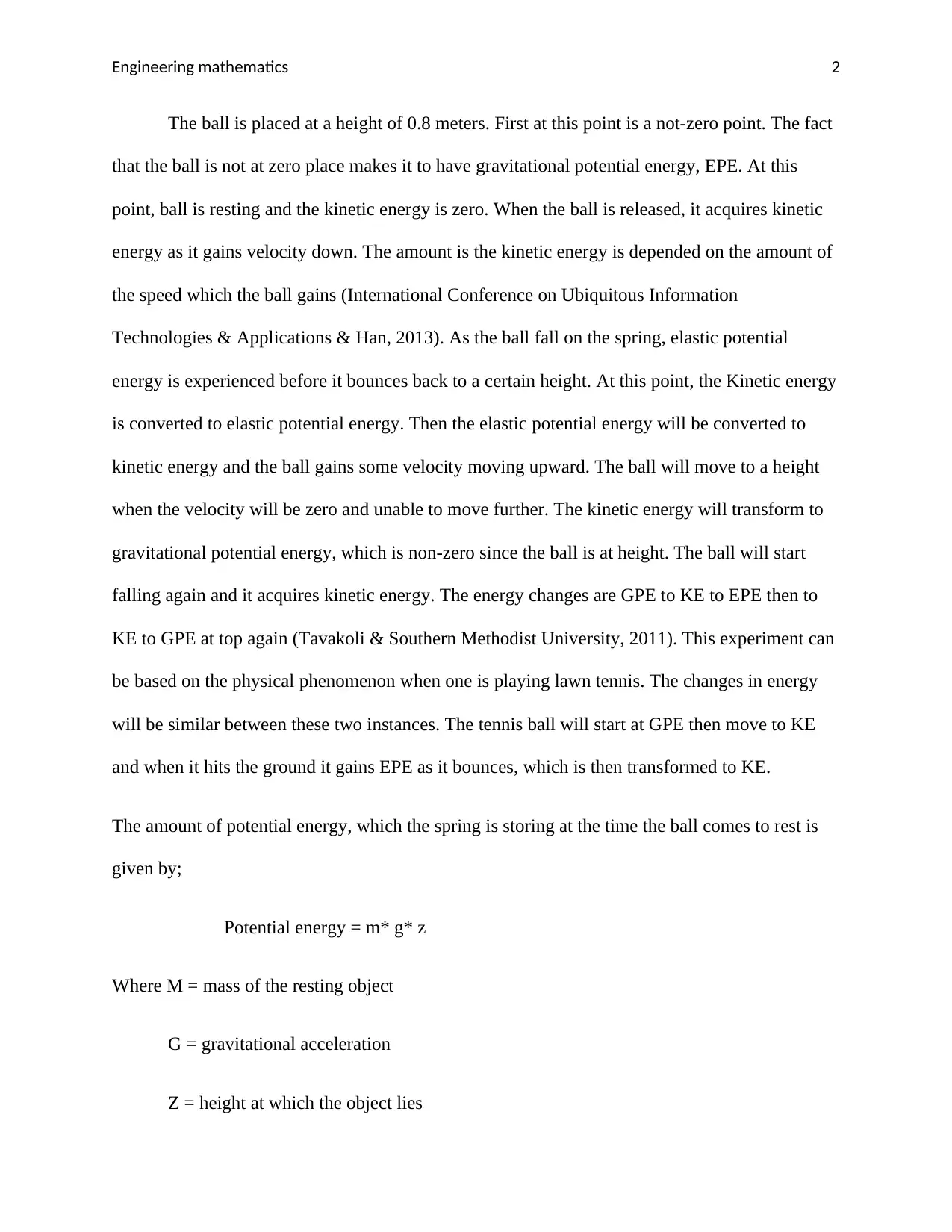Physics Assignment: Analysis of Energy Transformations in a System
VerifiedAdded on 2020/05/04
|4
|468
|43
Homework Assignment
AI Summary
This physics assignment analyzes energy transformations, focusing on potential and kinetic energy. The assignment explores the changes in energy within a system, using the example of a bouncing ball to illustrate the conversion between gravitational potential energy, kinetic energy, and elastic potential energy. The solution includes a calculation of potential energy, demonstrating the application of relevant formulas. Furthermore, the assignment draws parallels to real-world scenarios, such as a tennis ball, to enhance the understanding of energy transformations in everyday contexts. The references cited provide additional context and resources related to the topic. The assignment explores the concepts of energy conversion, and the application of physical principles.
1 out of 4








![[object Object]](/_next/static/media/star-bottom.7253800d.svg)